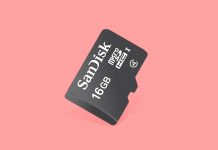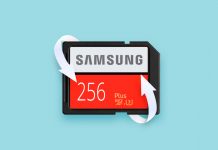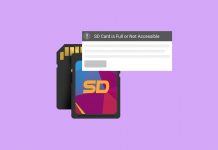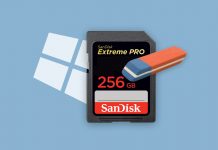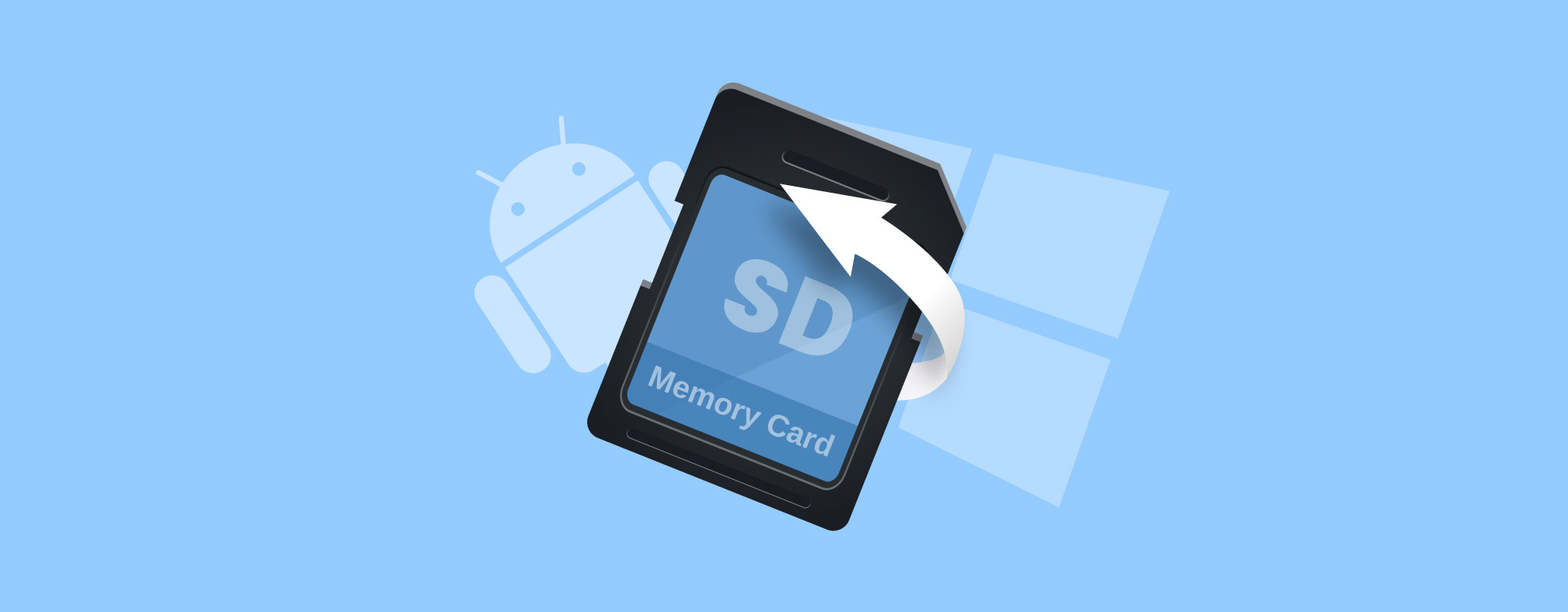 Every single day, many people format their SD cards only to later realize that the same SD cards contain important data, such as images, videos, or documents. In most of these cases, the files aren’t permanently erased. Instead, they’re simply marked as empty space that’s available for new data. This means you can unformat an SD card and get your files back if you act fast and follow our instructions.
Every single day, many people format their SD cards only to later realize that the same SD cards contain important data, such as images, videos, or documents. In most of these cases, the files aren’t permanently erased. Instead, they’re simply marked as empty space that’s available for new data. This means you can unformat an SD card and get your files back if you act fast and follow our instructions.
Is it Possible to Unformat an SD Card?
Note that there is no “unformat” or reverse format function available on any device. However, you can attempt to restore the formatted data by employing various techniques. First, you need to determine the method used to format the SD card. A quick format leaves the actual partitions containing your data untouched and marks the storage space as available for writing new files. Thus, you can use the period between the quick format and saving new files to your SD card to recover data from it.
📜 However, when you perform a full format, your PC erases all data permanently. Unlike a quick format, your PC writes zeros across the entire drive and scans for bad sectors. Similarly, some cameras (especially Sony models) send an “SD_ERASE” command (similar to TRIM on SSDs) or automatically perform a full format that overwrites the old data with zeros. This process does destroy the original file data. Still, you won’t know for sure what’s recoverable until you actually scan the card. Maybe the full format hasn’t finished properly or the SD_ERASE command didn’t trigger.
How to Unformat an SD Card
The easiest way to recover data from a formatted SD card is to use a third-party data recovery program. Often, it’s the only choice you have, besides contacting an expensive professional data recovery company. You can perform data recovery on your Android phone or your Windows or macOS computer.
Method 1: Undo a Formatted SD Card in Windows
The best way to unformat SD card storage is using data recovery software. We’ve tested dozens of tools, and our rating of the best SD card recovery software covers many great options. For this guide, we’re using Disk Drill because it consistently delivers excellent results while being accessible even to complete beginners. In our tests, it showed excellent recovery results with all types of files you typically find on SD cards, such as photos (JPG, PNG, RAW formats), videos (MP4, MOV, AVI), documents (PDF, DOCX), and audio files. The Windows version offers up to 100MB of free SD card unformat recovery, which is enough to test if your files are recoverable and rescue your most important documents or photos or even a smaller video or two.
⚠️ Important: Stop using your SD card immediately after formatting. Every new file you save increases the chance of overwriting your deleted data, making recovery harder or impossible.
Here’s how to unformat an SD card using Disk Drill on Windows:
- Download and install Disk Drill for Windows.

- Connect your SD card to the computer using a card reader, then launch Disk Drill.
- Select your formatted SD card from the list of storage devices. Click Search for lost data to start scanning.
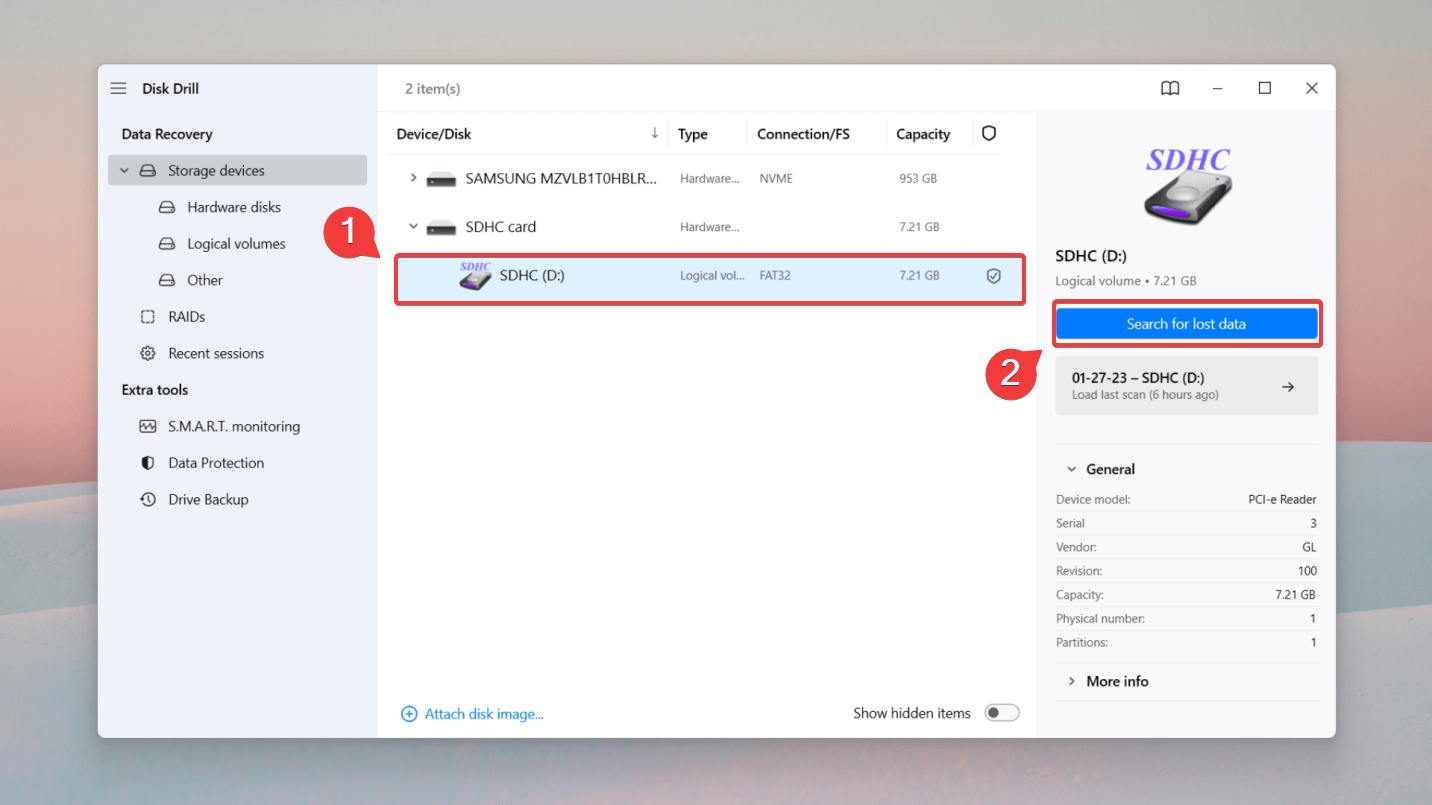
- Disk Drill will scan your SD card. This might take a while, depending on the card’s size and performance rating. You can click Review found items to see what’s recoverable with scanning continuing in the background.

- Use the filters on the left to narrow down by file type, or use the search bar at the top to find specific files. You can click on individual files to preview them directly in Disk Drill. If a file can be previewed without any issues, it means that it can also be recovered.
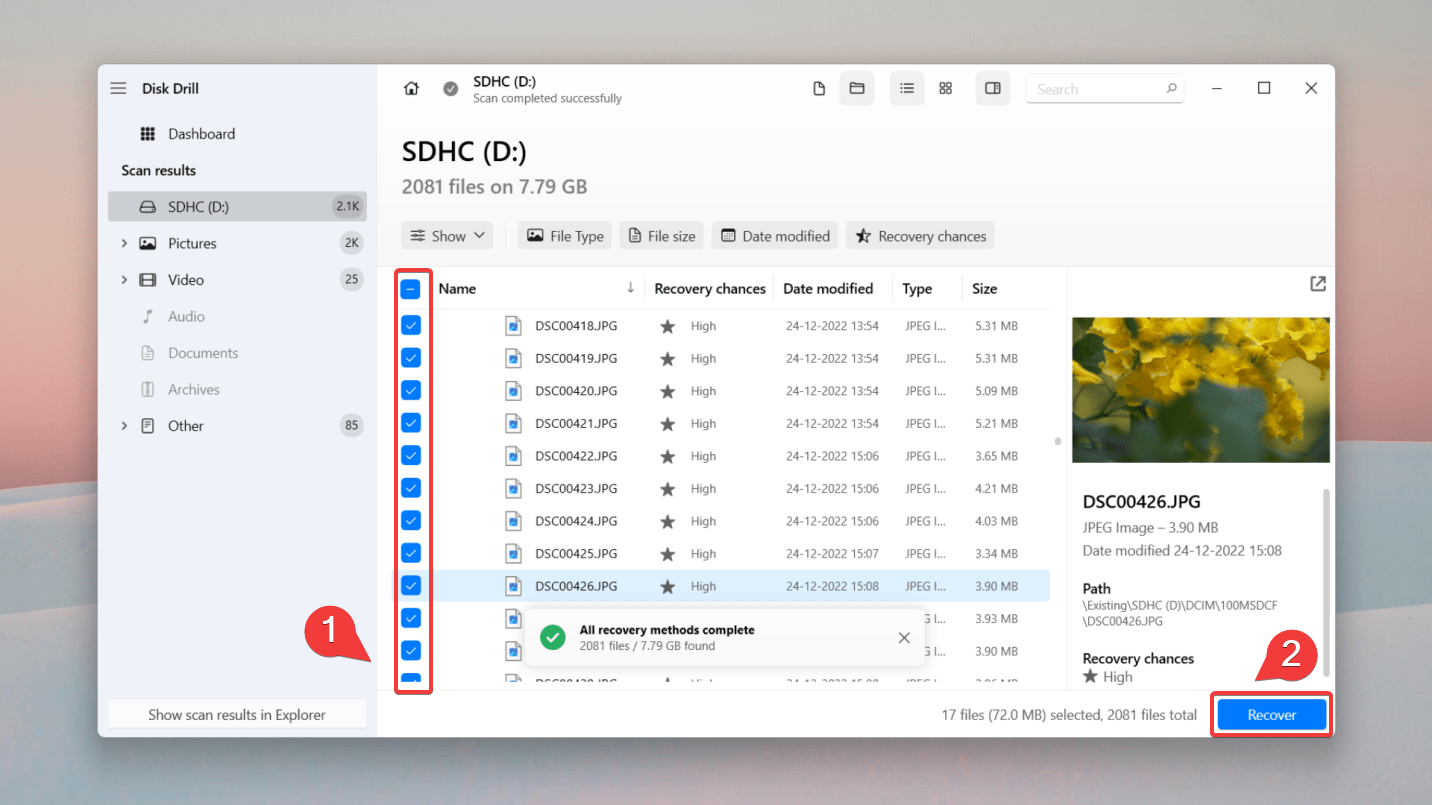
- Select the files you want to recover, then click the Recover button. You can also click Recover all to restore everything Disk Drill found.
- Choose where to save your recovered files. Never save them back to the same SD card. Instead, select your computer’s hard drive or an external drive. Click Next to complete the recovery.

If you’re missing video footage from action cameras, try Disk Drill’s Advanced Camera Recovery mode. It’s specifically designed to reconstruct fragmented videos from GoPro, DJI, Canon, Panasonic, Insta360, Sony, Olympus, and other camera brands, which regular scans might miss these files because they’re stored in fragments across the card. Need help with specific camera brands? Check out our guides:
💡 Tip: Disk Drill includes useful extras like byte-to-byte backups that we often use on problematic storage devices. If your SD card is showing signs of corruption, then it’s best to create a backup image first before attempting recovery to prevent further damage to the card. Learn more in our guide on corrupted SD card recovery.
Method 2: Unformat SD Card on Mac While Still Connected to an Android Phone
Want to unformat an SD card on your phone without removing it? If you’re using a Mac, you can recover files directly from your SD card while it’s still inserted in your Android device using Disk Drill. The process requires enabling USB debugging from Developer Options on your device (the exact steps might vary slightly depending on your Android version and phone manufacturer):
- Open Settings > About phone on your Android device.
- Tap Build number seven times. You’ll see a message saying “You are now a developer!”
- Go back to the main Settings screen and open Developer Options (usually near the bottom).
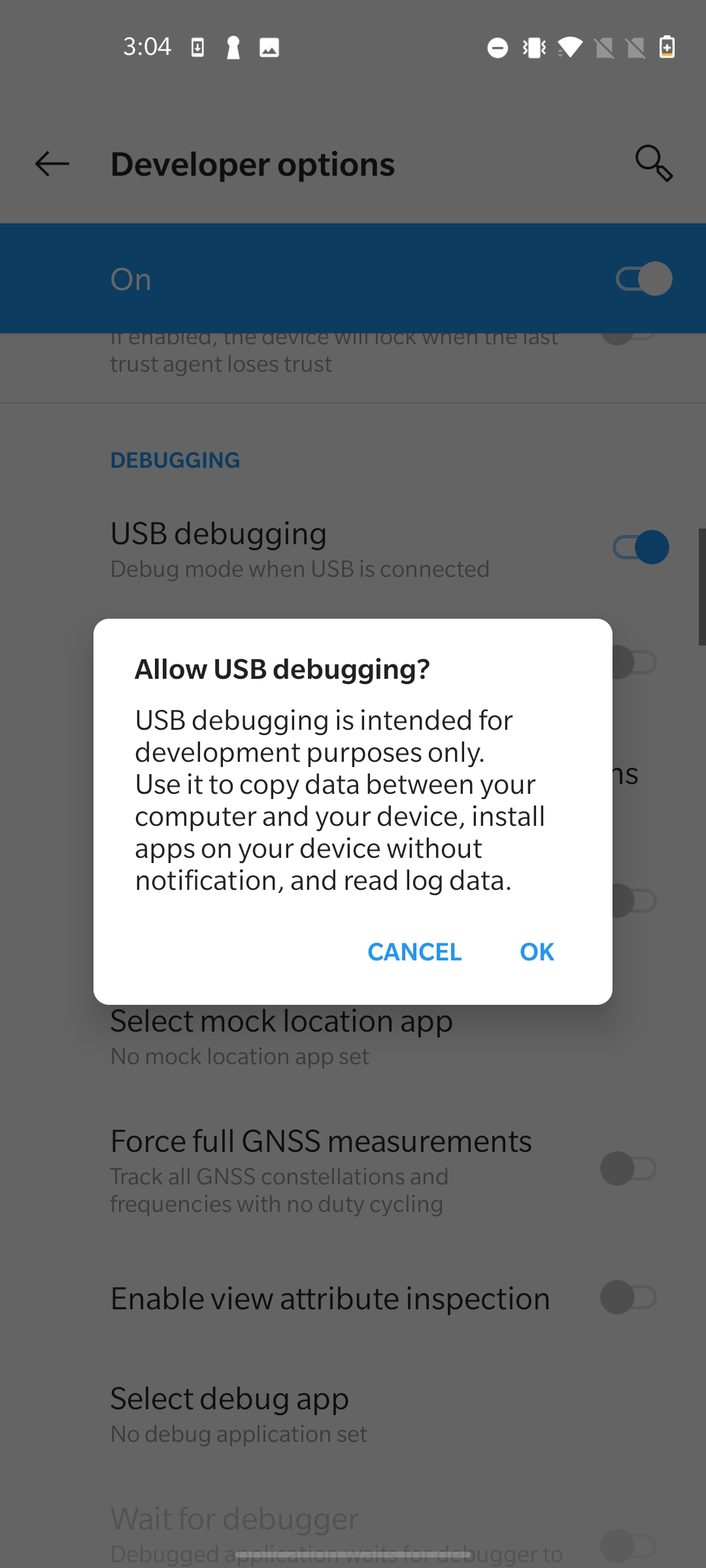
- Enable USB debugging.
With USB debugging enabled, you can connect your device to your Mac, and it will ask “Allow USB debugging?” Tap Always allow from this computer and then Allow. This lets Disk Drill access your device without asking every time. From here, you can launch Disk Drill and scan the SD card connected to your Android phone by following these steps:
- Download and install Disk Drill for Mac.
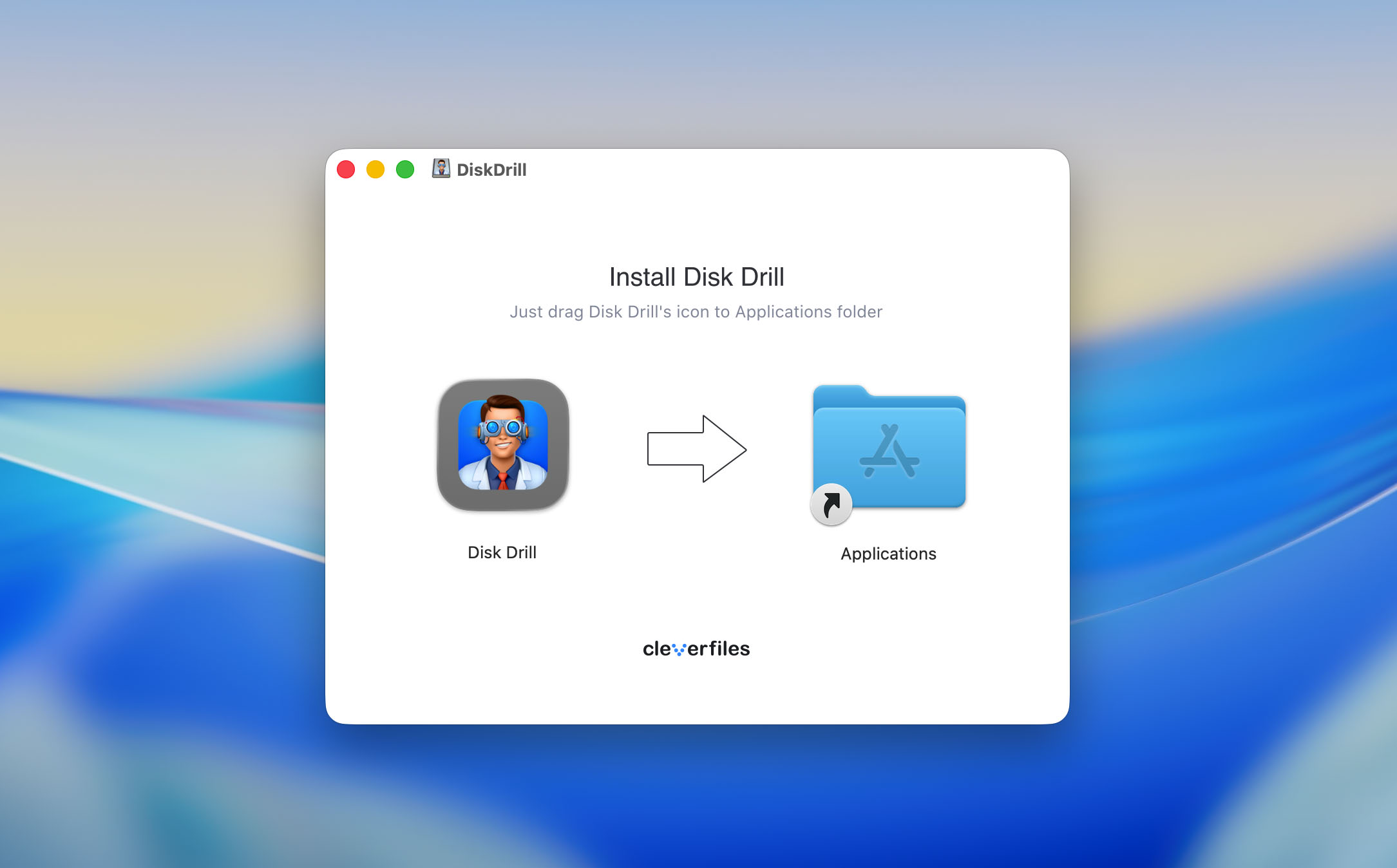
- With your Android phone connected, launch Disk Drill.
- In the left sidebar, click Android Devices. Your phone should appear in the list.
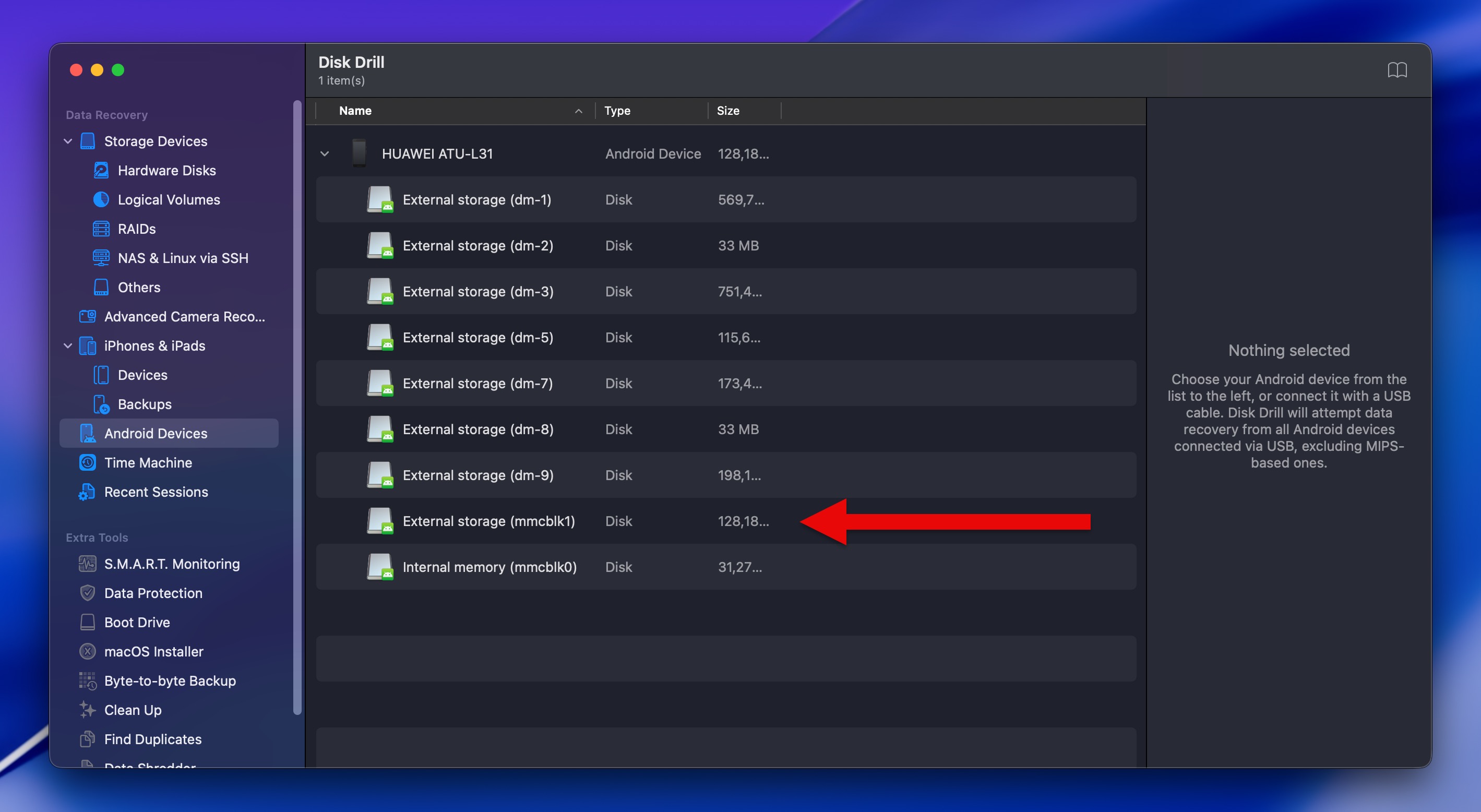
- Disk Drill will show all available storage on your device, including your SD card.
- Select your SD card and click Search for lost data to begin scanning.
- Once the scan completes, Disk Drill displays all recoverable files from your SD card. You can filter them, search through them, and preview them.
- Select the files you want to recover, click Recover, then choose where to save them on your Mac. The free version of Disk Drill for Mac can scan your SD card and preview all recoverable files, but it can’t recover any data.
If Disk Drill can’t detect your SD card through your phone, you’ll need to remove it and use a card reader instead. If your files were on your phone’s internal memory instead of the SD card, you would need to root your Android device first.
Method 3: Unformat an SD Card on Android
Unable to connect your SD card or Android device to your PC? You can recover your data using an Android data recovery app, DiskDigger. While it’s not as effective as full-fledged data recovery apps for Windows and macOS, it will get the job done in most cases. There are two scan types you can perform using the DiskDigger Android app: Basic Scan, and Full Scan. Basic Scan is free, but it can only recover deleted photos. It also doesn’t require the Android device to be rooted. On the other hand, the paid Full Scan can recover all file types, but it requires the device to be rooted. Here’s how to use Disk Digger to recover data from a formatted SD card on an Android device:
- Download DiskDigger from the Google Play Store.
- Launch the DiskDigger app.
- Tap Start Basic Photo Scan, or select the SD card from the Full Scan menu (requires rooting), depending on your needs.
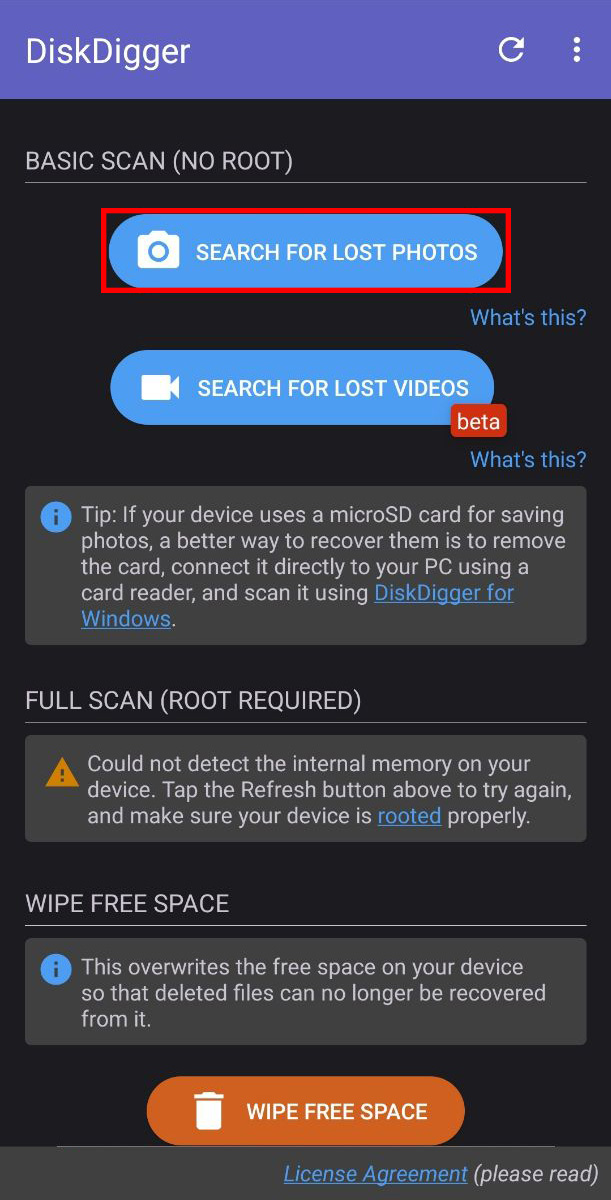
- Choose the file types you wish to recover and tap OK.
- Select the files you wish to recover and tap Recover.
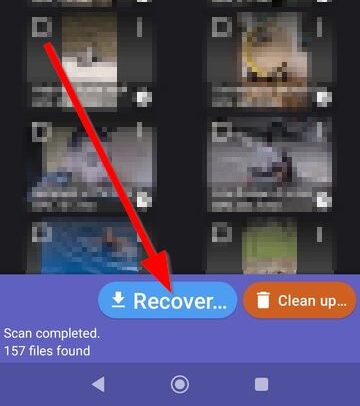
- Choose whether you wish to save the files locally, save them to an app, or upload them to an FTP server.

We often hear from users that this method either doesn’t find their files or the recovered photos are blurry and low quality. This happens because with a non-rooted device, the app will likely recover lower-resolution versions of your photos (cache files) rather than the original full-quality images. For the best results, we recommend finding a way to scan your SD card on a computer using proper data recovery software instead.
Can I Unformat an SD Card That Was Used as Internal Storage?
This is another common problem, though not as common as it used to be because Google dropped adoptable storage from the Android system itself and left it to manufacturers to decide whether they wanted to implement it. Some phones still offer this feature, but many don’t. If your SD card functions as part of your phone’s system memory (adoptable storage) and the phone is not rooted, recovery is not possible. Here’s why:
- The rooting process would overwrite data on the SD card and make recovery impossible.
- System encryption ties the card specifically to your phone. If you remove it and connect it to a computer, the data remains encrypted and unreadable.
- Without the phone’s encryption key, no recovery software can access the data.
If you’re planning to use adoptable storage in the future, make sure to maintain regular backups to cloud storage or your computer as this is the only reliable way to protect your data when using SD cards as internal storage.
Is it Possible to Unformat an SD Card on a Camera?
No, you can’t unformat an SD card directly on a camera because cameras don’t have built-in data recovery features (they only have format options that erase data). To recover files from a formatted camera SD card, you’ll need to remove the card from your camera and use one of the methods we covered above:
- Connect the SD card to a computer using a card reader and scan it with Disk Drill (Method 1 for Windows or Method 2 for Mac).
- Connect the SD card to your Android device and use an Android recovery app if you only have a phone available (Method 3).
Regardless of which recovery method you go for, the sooner you stop using the SD card after formatting and begin the recovery process, the better your chances of recovery.
Conclusion
If you still have questions about how to unformat an SD card, check the FAQ section below. We’ve answered the most common issues people run into. You can also drop your question in the comments section below, or reach out to us on Facebook, X (Twitter), or LinkedIn. We’ll gladly reply and walk you through your specific situation.
FAQs
- If you don't have a prior backup, download an SD card recovery app on your Android phone and use it to retrieve your lost data.
- Recover your data by downloading a Google Drive backup on your phone. This way, you can recover all your pictures, videos, chats, music, and other files from Google Drive.
- Back up all the data on your device. Now, decrypt the SD Card from the Android Internal Memory.
- On your phone, go to Settings > Storage > Storage Settings.
- Tap Format as portable.
- Then, tap Format.
- Now, unmount the SD card from your Android after making it portable again.
- Finally, use SD card recovery software to retrieve lost data and unformat the SD card.

